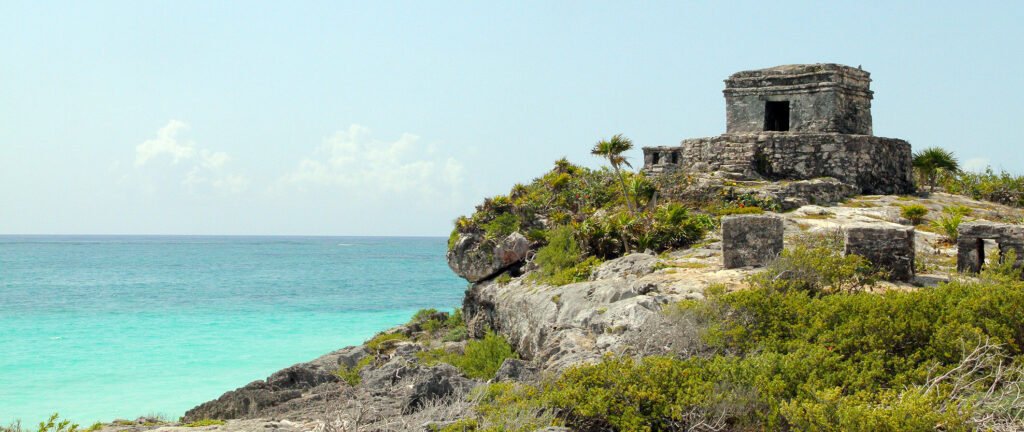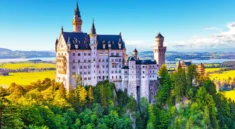
Imagine a place where ancient ruins rise from dense jungles, where turquoise waves kiss sugar-white shores, and where every bite bursts with centuries of flavor. This is a journey through a region steeped in the mysteries of the Mayan civilization, the magnetic allure of Caribbean and Pacific beaches, and the vibrant energy of Latin American cuisine. From the temples of Tikal to the beaches of Tulum, from chocolate origins to sizzling street tacos, this experience is a sensory celebration of history, nature, and taste.
Whether you are a history lover, a sun-seeker, or a foodie on a flavorful mission, diving into the heart of Mesoamerican culture and the natural bounty that surrounds it promises an unforgettable journey. Let us guide you through the sacred ruins, sandy coastlines, and spice-filled kitchens of Maya lands, where the past and present dance in harmony.
Uncovering the Mayan World: Legacy in Stone and Spirit
The Mayan civilization, one of the most advanced ancient cultures in the Americas, flourished for thousands of years across present-day Mexico, Guatemala, Belize, Honduras, and El Salvador. Renowned for their astronomical knowledge, hieroglyphic writing, calendar systems, and majestic architecture, the Maya left behind cities that still astound modern visitors.
Tikal: A City Among the Trees
Deep in the Guatemalan rainforest lies Tikal, a UNESCO World Heritage Site that was once one of the most powerful Maya city-states. Towering temples pierce the canopy, and the air hums with the sounds of howler monkeys and tropical birds. Walking through the Great Plaza, where Temple I (Temple of the Great Jaguar) faces Temple II, you can almost hear the echoes of royal ceremonies and bustling markets from centuries ago.
Tikal isn’t just visually stunning—it’s spiritually moving. Climb to the top of Temple IV at dawn and watch the mist burn away from the jungle as the sun rises over the ruins. It’s a moment of pure wonder.
Chichen Itza: The Icon of the Yucatán
In Mexico’s Yucatán Peninsula, Chichen Itza stands as one of the New Seven Wonders of the World. The Pyramid of Kukulcán (El Castillo), with its perfect astronomical alignments and dramatic equinox shadow play, is a marvel of engineering and cosmology. Nearby, the Great Ball Court, Cenote Sagrado, and the Temple of the Warriors offer deeper glimpses into Mayan religious and social life.
Come during the spring or fall equinox to witness the Serpent of Light, when the sun casts a snake-like shadow along the pyramid’s staircase—a breathtaking demonstration of Mayan science and belief.
Palenque, Copán, and Beyond
Other sites like Palenque in Chiapas, Copán in Honduras, and Uxmal in Yucatán add texture to the Mayan story. At Copán, the intricately carved Hieroglyphic Stairway tells tales of kings and gods. At Palenque, set against lush jungle hills, tombs and palaces reveal the sophistication of Mayan art and burial practices.
These ruins are not relics; they are touchstones of a living heritage that continues in modern Maya communities, where ancient languages, crafts, and rituals are still practiced today.
Beach Escapes: Where History Meets the Horizon
After exploring the temples, cool off on the shores of the Caribbean Sea or the Pacific Ocean, where some of the world’s most beautiful beaches await. These coasts are not just for relaxation—they are an extension of the cultural journey.
Tulum: Temples by the Sea
Nowhere blends heritage and ocean beauty quite like Tulum, where Mayan ruins perch on cliffs above turquoise waters. Once a port city for the Maya, Tulum is now a bohemian paradise. Explore the ruins at sunrise, then spend the afternoon swimming in clear cenotes or lounging on powdery beaches under palm trees.
Tulum also offers access to the Sian Ka’an Biosphere Reserve, a UNESCO site teeming with biodiversity—from dolphins and sea turtles to manatees and colorful coral reefs. Eco-conscious resorts, beach yoga, and jungle retreats complete the experience.
Belize: Barrier Reefs and Ancient Caves
In Belize, beach escapes come with underwater thrills. The Belize Barrier Reef, the second largest in the world, is a diver’s dream. Explore the legendary Great Blue Hole, or snorkel through marine sanctuaries alive with rays, reef sharks, and vibrant fish.
On land, visit Actun Tunichil Muknal (ATM) Cave, a sacred Mayan site filled with ceramic offerings, skeletal remains, and hidden chambers. It’s a beach vacation with an archaeological twist.
Pacific Bliss: El Salvador and Guatemala
The Pacific coasts of El Salvador and Guatemala offer a different flavor of beach life—quieter, more rugged, and perfect for surfers or those seeking solitude. Towns like El Tunco in El Salvador and Monterrico in Guatemala provide relaxed atmospheres with black-sand beaches, laid-back hostels, and sunset views to remember.
These coasts are often overlooked by tourists but are rich in charm and culture, with local fishermen bringing in fresh catches and evening bonfires on the sand.
A Culinary Adventure: Flavors of the Maya and Beyond
Food in the Maya world is not just nourishment—it’s storytelling. The region’s cuisine is a fusion of indigenous traditions and colonial influences, where ingredients like corn, chili, cacao, and beans play starring roles. Prepare your palate for a culinary journey that honors history with every bite.
Ancient Roots: From Maize to Chocolate
The Maya revered maize (corn) as a sacred crop, and it remains central to their cuisine today. Freshly made tortillas, tamales steamed in banana leaves, and atole (a corn-based drink) connect modern meals to ancient rituals.
Chocolate, too, was born in the Maya world. Cacao beans were once used as currency, and ceremonial cacao drinks were spiced with chili and consumed by royalty. Today, artisanal chocolate tours in Belize, Guatemala, and Mexico let you taste this ancient elixir while learning how it’s made—from bean to bar.
Street Food Sensations
In cities and towns across the region, street food vendors serve up bold, satisfying flavors. Try salbutes and panuchos in Yucatán—fried tortillas topped with spiced meat, avocado, and pickled onions. Or grab a pupusa in El Salvador, a thick corn flatbread stuffed with cheese, beans, or meat, often served with spicy slaw and tomato sauce.
Guatemalan cuisine offers delights like pepian, a thick stew made from roasted seeds, spices, and meat, and kak’ik, a bright red turkey soup with a rich blend of local herbs. In Belize, dishes reflect its Caribbean influences—rice and beans with stewed chicken, fry jacks, and johnnycakes are everyday staples.
Modern Fusion and Fine Dining
In coastal resorts and cosmopolitan hubs like Cancún, Antigua, or San Pedro, chefs are reimagining traditional dishes with modern flair. Expect ceviches with tropical fruits, mole sauces made with local cacao, and creative twists on tacos using fresh seafood and locally grown produce.
Cooking classes and food tours allow travelers to dive deeper—grinding spices, learning traditional preparation methods, and gaining insight into the cultural significance of each dish.
Culture Lives On: Festivals and Communities
Maya heritage is not confined to ruins—it lives on in the rituals, festivals, and daily lives of indigenous communities throughout the region. Visiting during local celebrations adds another layer of depth to your journey.
Day of the Dead and Hanal Pixán
In southern Mexico, the Day of the Dead takes on unique Mayan flavors. Known as Hanal Pixán in the Yucatán, it is a time to honor ancestors with altars, food offerings, and traditional dances. Families visit cemeteries to share meals with the departed, and the air fills with the scent of marigolds, copal incense, and sweet pan de muerto.
Semana Santa and Local Fiestas
In Guatemala, Semana Santa (Holy Week) in Antigua is a majestic blend of Catholic and indigenous tradition. Elaborate processions wind through cobblestone streets decorated with alfombras—intricate carpets made of colored sawdust and flowers.
Throughout the year, local festivals celebrate patron saints, harvests, and ancient gods with music, fireworks, traditional dress, and food. These events are vibrant expressions of cultural resilience and pride.
Responsible Travel: Supporting Heritage and Nature
As tourism to these rich regions grows, responsible travel is vital. Support local artisans and guides, stay in eco-conscious accommodations, and be respectful at sacred sites. Engage with indigenous communities through ethical tours that ensure your visit benefits rather than disrupts.
Cenotes, reefs, and ruins are delicate treasures. Sustainable tourism practices—like minimizing plastic use, sticking to designated paths, and learning cultural protocols—help preserve these wonders for future generations.
Conclusion: A Journey of Soul and Senses
Diving into Mayan heritage, soaking in beach escapes, and savoring flavorful cuisine is more than a vacation—it’s an odyssey into the heart of a civilization that continues to inspire awe. Here, the stones speak, the waves soothe, and the food tells stories that have simmered for millennia.
Whether you’re climbing the steps of an ancient pyramid, floating in a hidden cenote, or tasting mole for the first time under the stars, you are participating in a living legacy. In this land where past and present merge so beautifully, every moment is a discovery—and every journey, a blessing.



